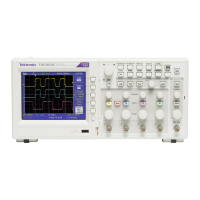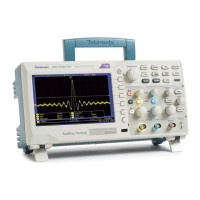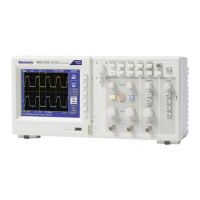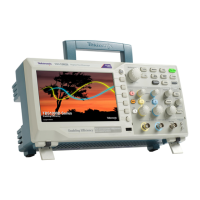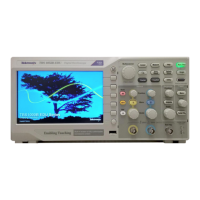Available trigger types
The oscilloscope lets you trigger on several signal conditions:
Trigger type Trigger conditions
Edge Edge triggers are the simplest and most
commonly used trigger type. An edge trigger
event occurs when the trigger source passes
through a specified voltage threshold (trigger
level) when the signal is transitioning in the
specified slope (rising or falling).
You can trigger on a rising or falling edge, as
defined by the slope control.
Pulse Width You can trigger on pulses that are less than,
greater than, equal to, or not equal to a
specified time period. You can trigger on
positive or negative pulses.
Pulse width triggers are primarily used to
analyze digital signals.
Runt A runt pulse is a pulse that crosses one
threshold but fails to cross a second
threshold before recrossing the first.
Therefore, a runt trigger needs two
thresholds to define the two levels that a
signal must pass through to be considered a
valid (nonrunt) signal.
You can trigger on any positive or negative
(or either) runt signal. You can also trigger on
runt signals with pulse widths that are less
than, greater than, equal to, or not equal to a
specified width.
Runt triggers are primarily used to analyze
digital signals.
Sampling oscilloscope concepts
42 TBS1000C Series Oscilloscopes User Manual
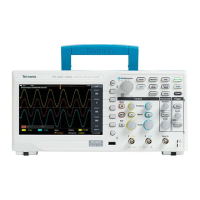
